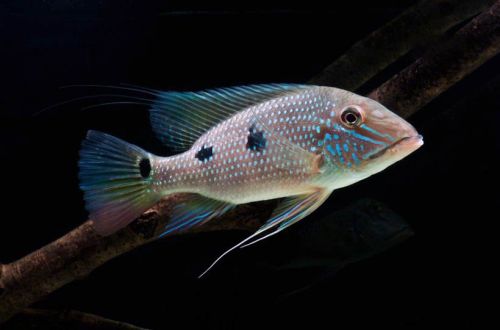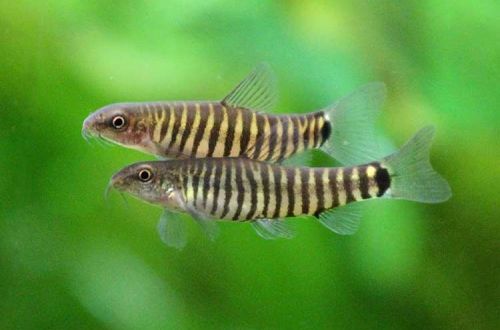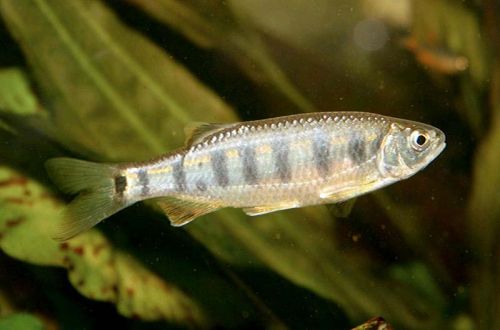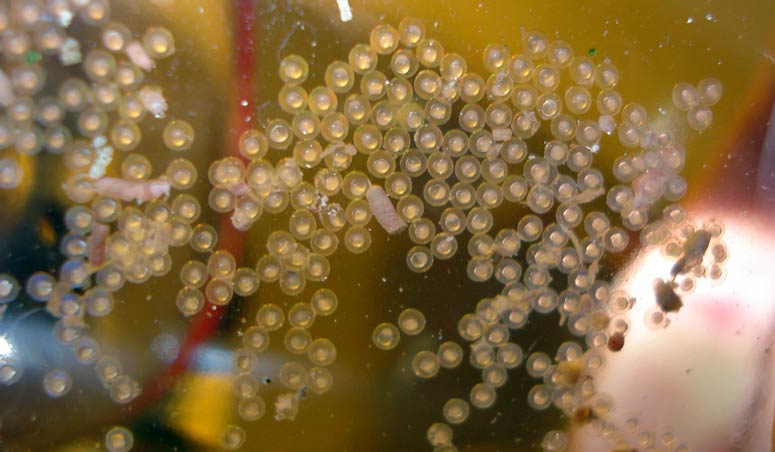
How to care for Danio caviar and fry
When the fish spawned and were returned back to the main aquarium, care must be taken to preserve the eggs. Although the incubation period is very short, only 2-3 days, but during this time the eggs can become a victim of the fungus. As a preventive measure, experienced aquarists and breeders add antifungal drugs to the spawning aquarium.
Contents
What does Danio caviar look like?
Danio fish caviar
 Enlarged image of zebrafish eggs
Enlarged image of zebrafish eggs
The eggs are tiny round capsules (balls) of gray color with a diameter of 0.7 mm. One female is capable of producing over a hundred eggs, so at the end of spawning, the bottom can be dotted with a huge number of eggs. However, not everyone will be fertilized.
Baby care
The fry that appear are very small and translucent, they can hardly be distinguished. In the first few days they do not swim, being in one place and feeding on the remnants of their yolk sac. The main tasks of the aquarist are: to provide juveniles with food and maintain high water quality.
What to feed?
As soon as they begin to swim, you can start feeding microscopic food. Shoe ciliates are excellent food, but they are difficult to breed. An alternative to live food are special powdered products or suspensions for spawning fish fry, which can be purchased at a pet store or online.
Feeding Danio fry
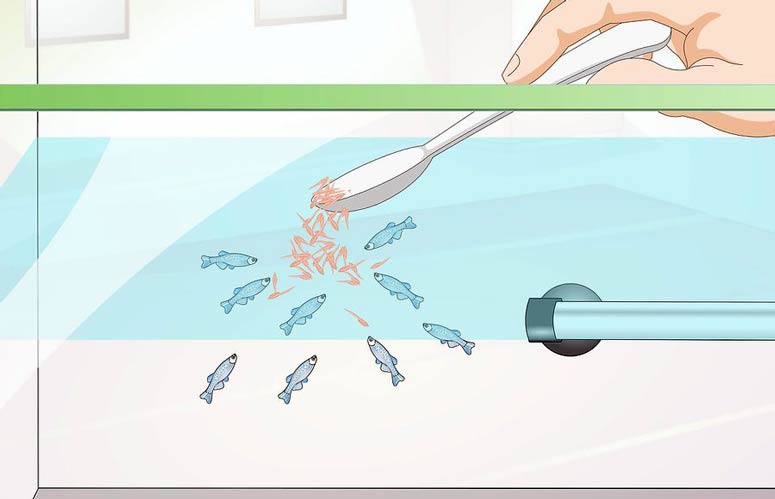 Feeding Danio fry with Artemia nauplii and small crustaceans
Feeding Danio fry with Artemia nauplii and small crustaceans
Around the age of 7-10 days, you can try to serve new foods. Artemia nauplii or dry food of a suitable size, such as crushed flakes or pellets, is a good choice. Feed once a day, but continue to feed microscopic food. Once there is confidence that larger foods are being eaten, they should become the basis of the diet.
Aquarium maintenance
Cleaning the spawning aquarium
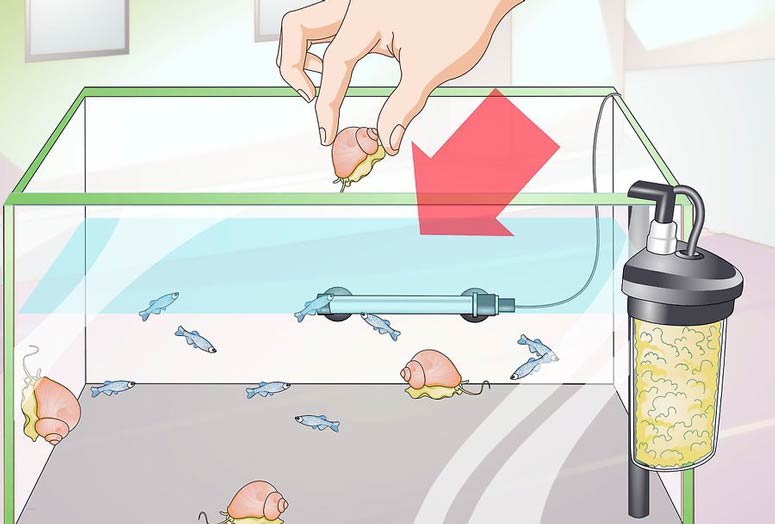 Placing a filter and adding snails to a spawning tank to keep the water clean
Placing a filter and adding snails to a spawning tank to keep the water clean
From the moment the fry hatch, the aquarium can already be equipped with a simple lighting system. The feeding process is accompanied by the formation of a large amount of waste. The fry are not able to eat all the food, and it will inevitably start to spoil and pollute the water. Placing a low power filter or airlift filter will help maintain the biological balance in the spawning tank. Freshwater snails will be a useful addition. They will eat leftover food, unfertilized eggs, dead fry (there will be such ones too).
Replacing the water in the spawning aquarium
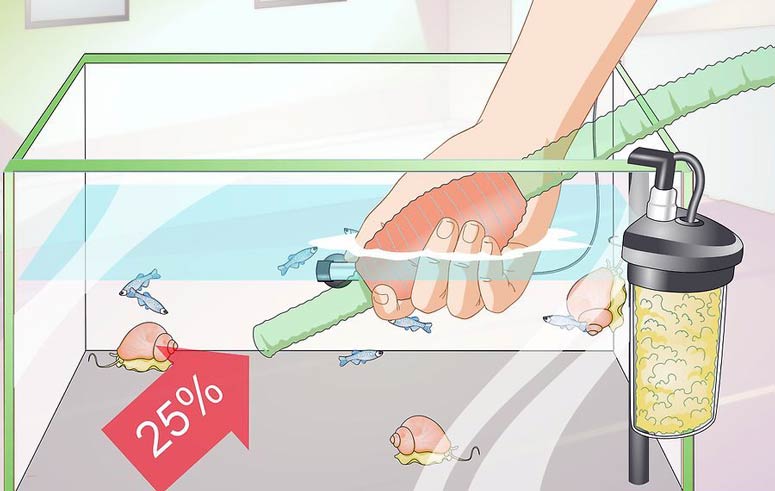 Replacing part of the water with fresh water in a spawning aquarium using a siphon
Replacing part of the water with fresh water in a spawning aquarium using a siphon
It is important to replace 10% to 25% of the water daily with fresh water of the same temperature (25–28°C) and hydrochemical composition of the water (soft, slightly acidic or neutral).
When to transfer Danio fry to the main aquarium?
Relocation of fry to a common aquarium
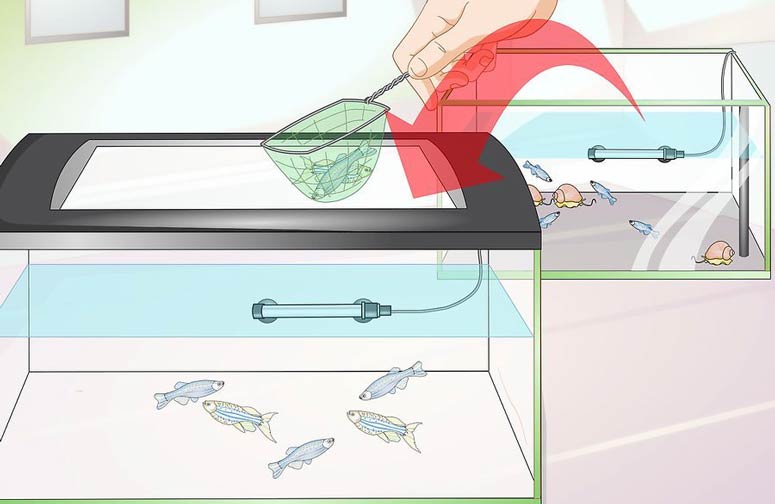 Grown up Danio fry move to a common aquarium with adult fish
Grown up Danio fry move to a common aquarium with adult fish
There are no exact time frames. Juveniles can be together with adult fish from the moment they reach 1 cm in length and even a little earlier (5–7 weeks of life). At this age, there is no longer a threat that they will be eaten. However, small fish are likely to lose competition for food, so the moment of moving to a community tank should be postponed until they are 70-75 days old, by which time the fry will grow to



